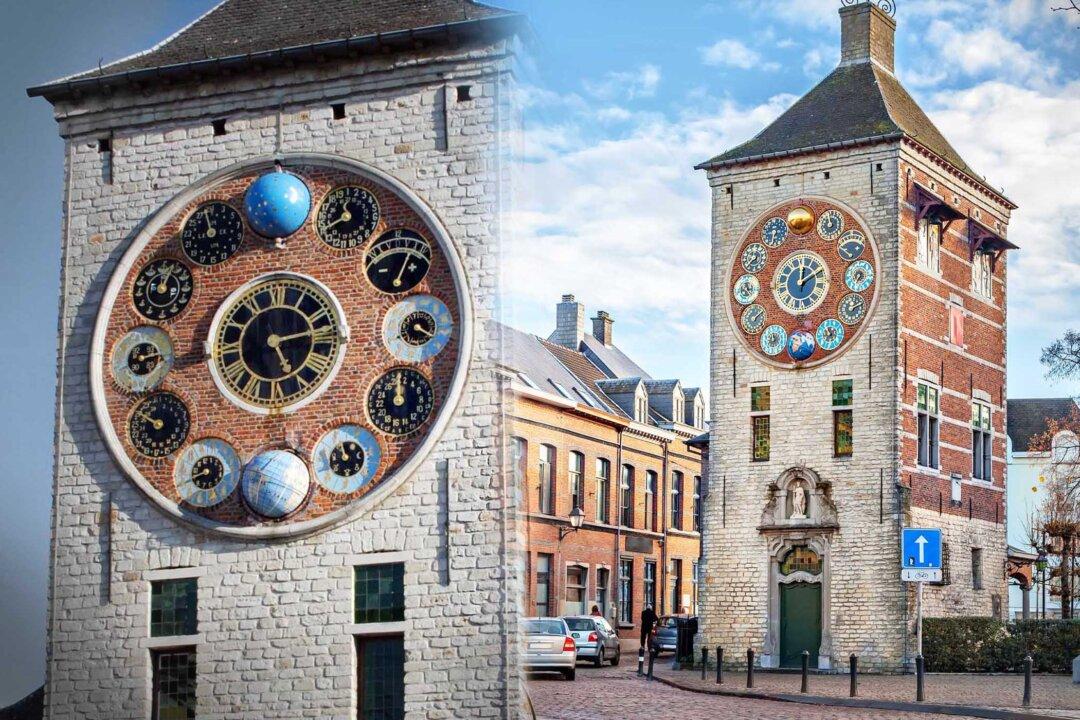Hidden away in a pretty Belgian town is an extraordinarily beautiful and curious clock tower. Donated to the town by autodidact Louis Zimmer, it sits in the wall of a large tower and features no less than ten faces and two globes arranged around a central clock, decorated in blue and gold.
The best time to visit one of the world’s most impressive clock towers is at noon. Not only does this spectacular creation in the town of Lier show everything from moon phases and the zodiac to tidal movement and the time on different continents, but when the regular clock strikes 12, something fun happens.






